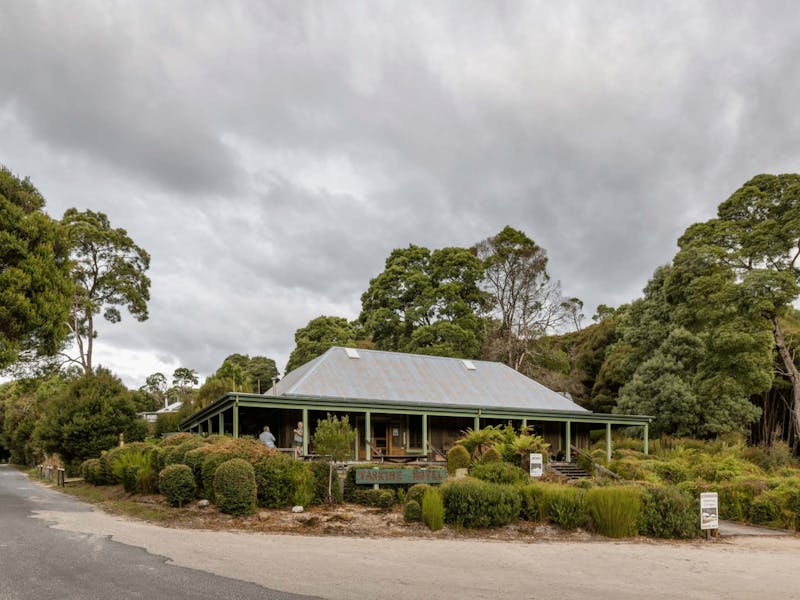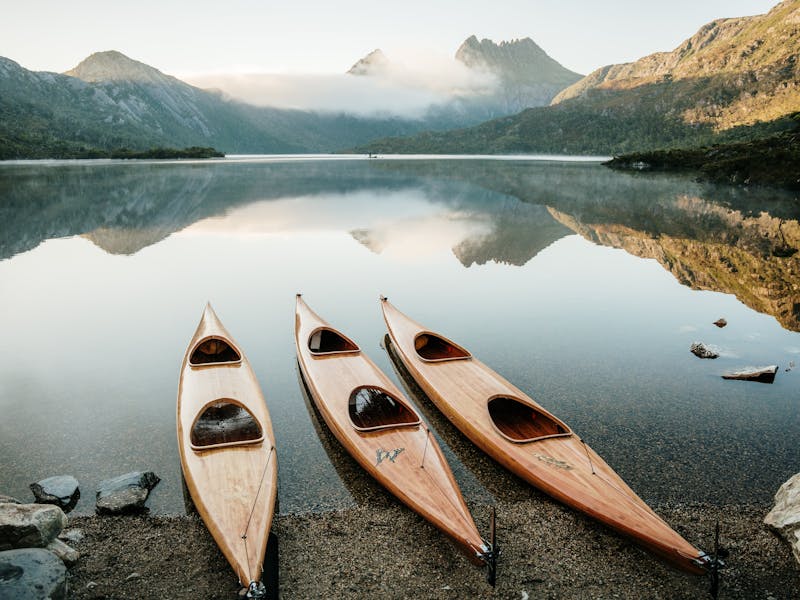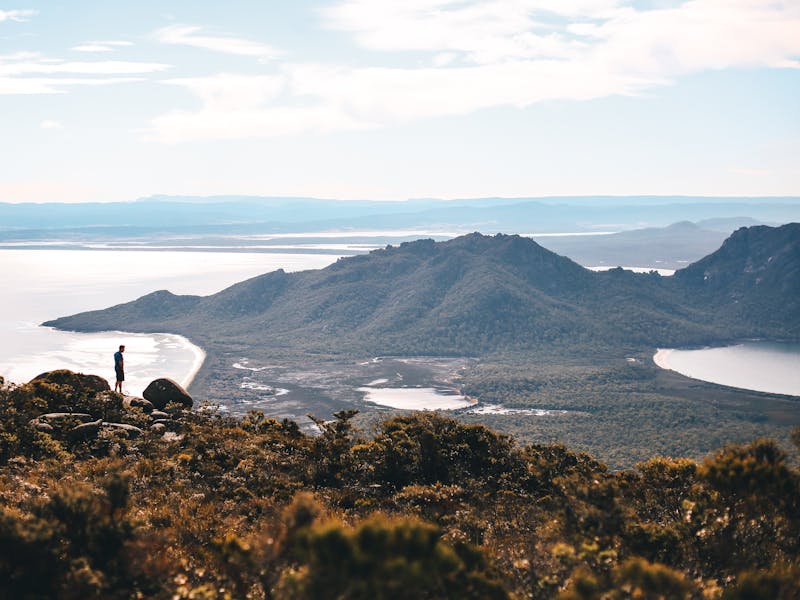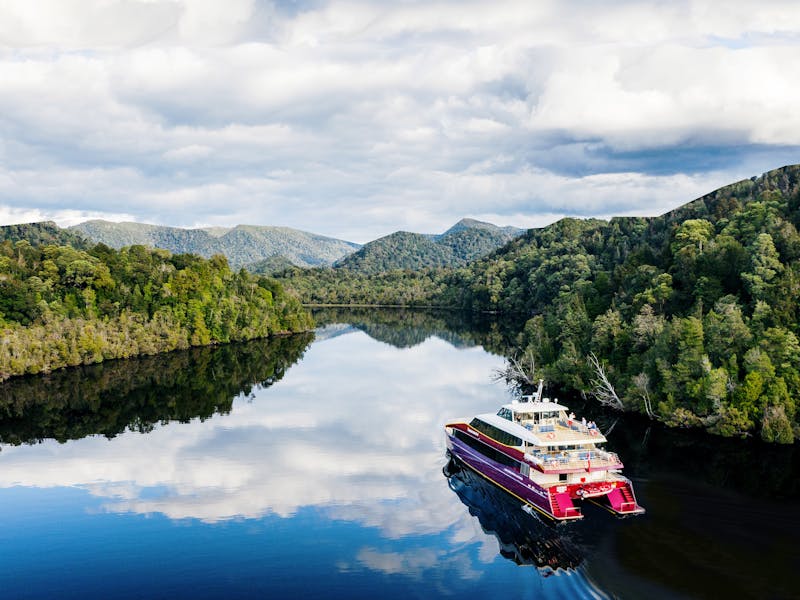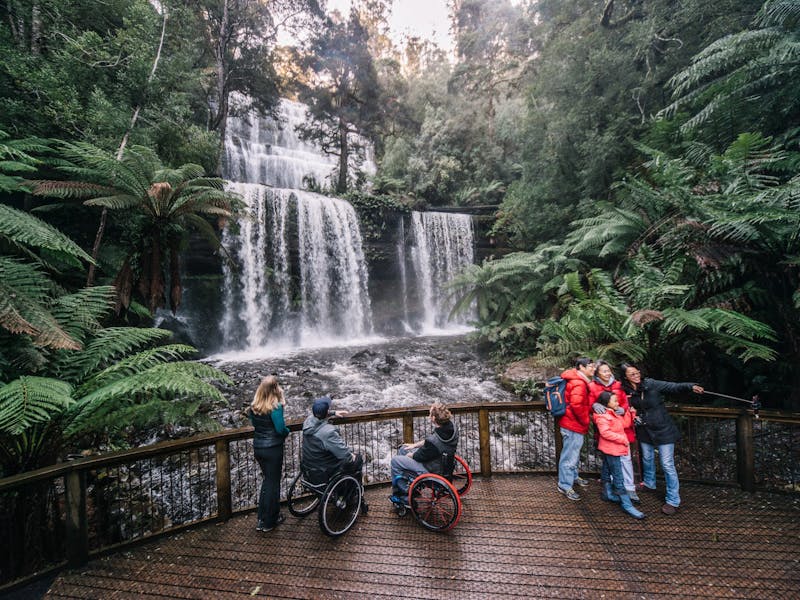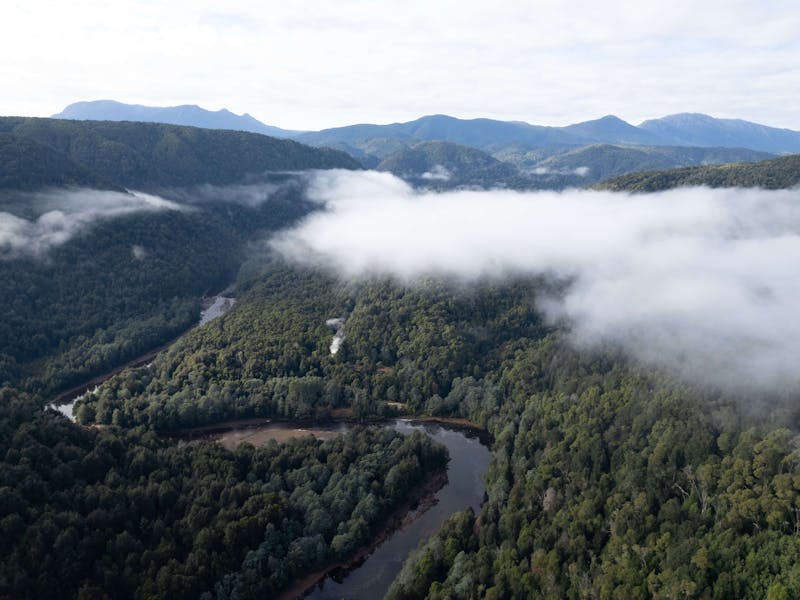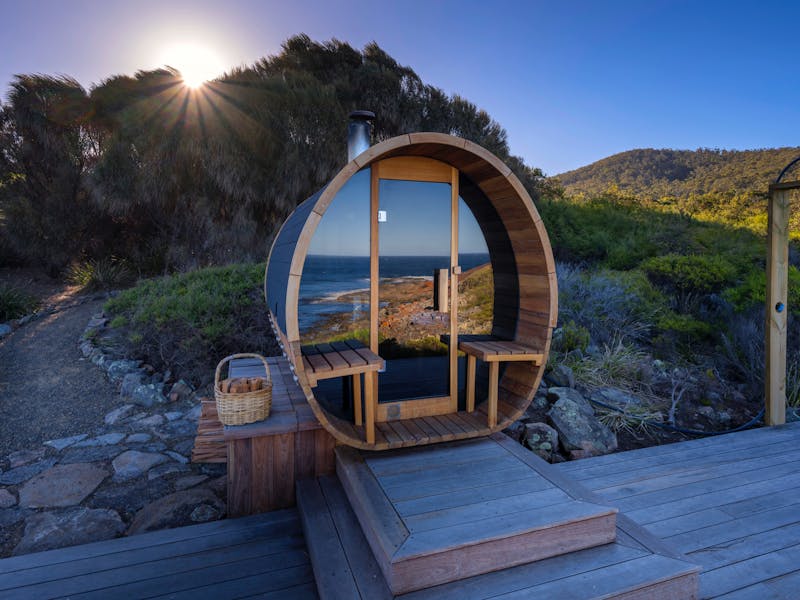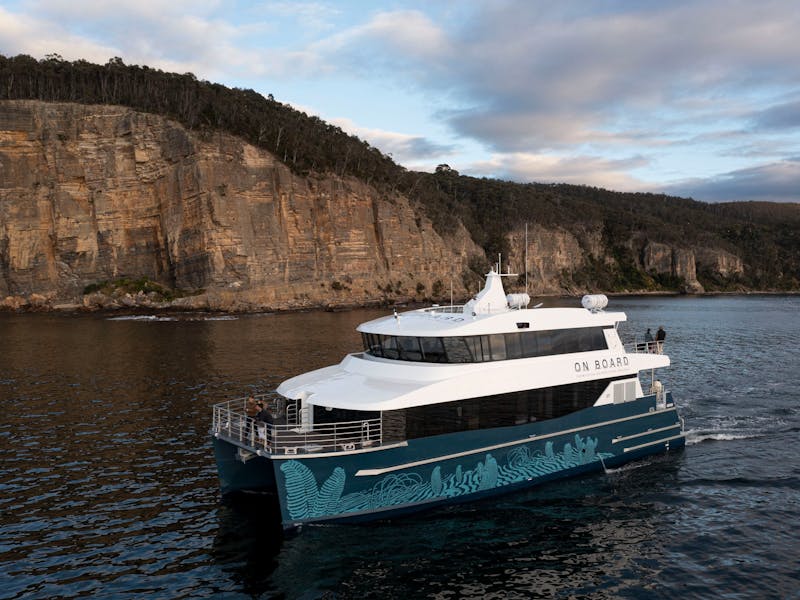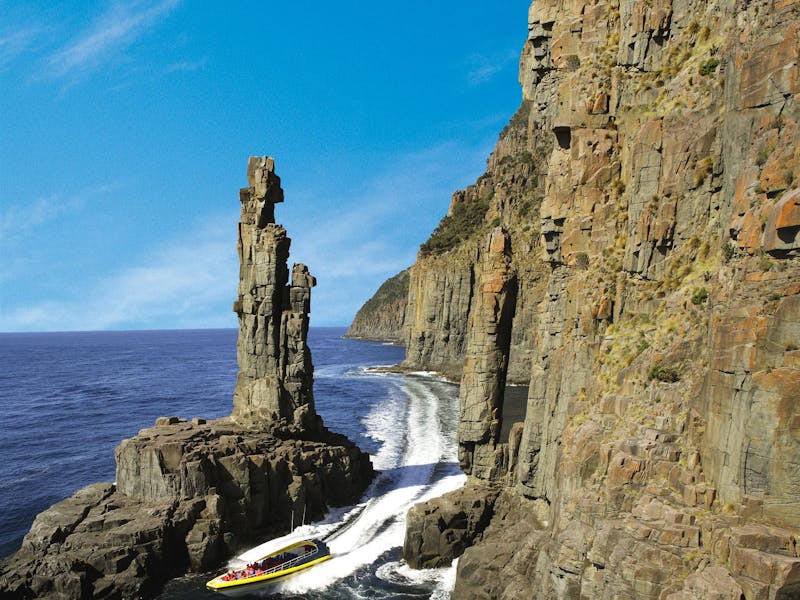
Tasmanian occupational therapist and national wheelchair basketballer Georgie Gott shares how she embraces Tasmania’s rugged wilderness – and how you can too.
Georgie has been exploring Tasmania’s wild places since she was a child. Being “carted through various forests” in her Dad’s backpack planted the seed for a lifelong love of bushwalking.
In 2020, Georgie – who has a paralysed leg – completed the 48km Three Capes Track using her crutches to mobilise.
“The walk itself is so accessible, so functional for anybody who's had great bushwalking experience or not much experience. That was my first multiday bushwalk,” Georgie says.
Not without its challenges, Georgie’s palms were covered in blisters by the end of the first day. With some first aid and creative use of her crutches to take the pressure off her hands, she was back in action the next day and able to finish the four-day walk.
The best part of the walk for Georgie? “Climbing up the Blade was definitely the highlight,” she says. “I left my crutches down the bottom and basically crawled my way up, because there was no way I was going to be able to crutch up there.”
She recalls the visceral beauty from atop the Blade.
“The wind’s smacking you and you’ve just got this beautiful view over Tasman Island.”
For Georgie, Tasmania’s wilderness is both restorative and rewarding.
When I'm immersed in nature… I feel fresh, I feel calm, relaxed. It's very much forest therapy for me.
“I always feel very accomplished after doing a bushwalk,” Georgie says. “Because I have to concentrate quite hard when I'm bushwalking, my mind’s very fixated on the walk rather than everything else that's going on at the moment.”

Three Capes Track – Cape Pillar and the Blade
Where to immerse in nature in Tasmania
Whether you’re embarking on a multiday journey like Georgie or squeezing a small nature-fix into your day, here's how you can experience Tasmania's wilderness yourself.
Three Capes Track
Georgie loves the Three Capes Track for its sweeping views and accessibility.
“Spectacular views, the whole walk – you’re just walking along cliff faces the entire time,” she says.
The four-day, 48km track starts at Port Arthur Historic Site and weaves along Tasmania’s southern coastline through to Fortescue Bay.
As a bonus, the track is is a ‘dry-boot’ trail, meaning you won’t be slogging through mud or tricky obstacles, and can spend more time ogling at the views from atop the Southern Hemisphere’s tallest sea cliffs instead.

Tall Timbers Adventure Tours
For Georgie, Tasmania’s wilderness tells its own story. Especially when walking through ancient forests.
“The ferns are absolutely huge… They feel kind of mystical and magical in a sense. And just make you think, ‘How long have they been here for?’”
On a guided four-wheel drive tour through Australia’s largest cool-temperate rainforest, you’ll encounter the towering trees, giant ferns, endemic plants and native animals that call Takayna / Tarkine home.


Floating Sauna Lake Derby
When asked about wilderness experiences beyond bushwalking, Georgie laughs and admits: “I mean, I like the Derby sauna”.
Perched upon Lake Derby and surrounded by forest, immerse yourself in nature from the steamy confines of Floating Sauna Lake Derby – proof that there’s a wilderness experience for everyone in Tasmania, some more relaxing than others...
Take to the trails, TrailRider-style
If you or your travel companion has a mobility-related disability, you may like to use a TrailRider all-terrain wheelchair, available for hire at several Tasmanian parks and local councils. Find more information on the Accessible travel page.

Pennicott Wilderness Journeys
Not just a land lubber, Georgie craves being close to the coast.
“The water down here is just something else. Tassie water is the best water,” she says.
Pennicott Wilderness Journeys can get you out onto the water to see sea cliffs, wildlife and secluded bays. Cruise along Turrakana / Tasman Peninsula without the hiking pack, or drift into Wineglass Bay by boat, skipping the steep climb.


Federation Peak, Southwest National Park
Par Avion
For Georgie, Tasmania’s appeal is in its unkempt edges.
“Tassie has this real rugged nature to it that you don't necessarily get in other areas of Australia.”
Take a Par Avion flight to see Tasmania’s rugged nature from above, offering an aerial view of the remote corners of Tasmania that very few people ever see.
Whether you’re seeking forest therapy, or a challenge – or, like Georgie, a little of both – Tasmania’s wilderness is welcoming to all. Start planning your own nature-filled Tasmanian journey today.
Staying safe in the wilderness
Preparation, using the right gear and choosing tracks suited to your fitness and skill level are all key to staying safe on this wild island. Learn more about exploring the island safely.
Continue your pursuit of the wilderness
Accessible travel in Tasmania FAQs
The Three Capes Track is accessible for most walkers with a reasonable level of fitness. For many hikers, it is their first ever multi-day walk. While you won’t require technical hiking experience to complete the track, it’s important to be well prepared – including carrying appropriate gear. You can expect to carry a pack weight of roughly 10-12kg for the duration of the walk.
The 48km track is split into manageable sections across four days of walking, with plenty of time to pause at lookouts or linger over the coastal sights, sounds and smells. While there are some climbs and long stretches, the walk is more about immersion than endurance, letting you take in Tasmania’s dramatic sea cliffs at your own pace.
The Three Capes Track also features some creature comforts that you won’t find on any other publicly owned multi-day hike in Tasmania:
- Architecturally designed hut accommodation with comfortable mattresses
- Ranger from Tasmania Parks and Wildlife Service stationed at every hut
- Cooking facilities at every hut
- Hot water outdoor shower on night two of the walk.
Please note that while Georgie was able to complete the Three Capes Track using crutches, the track is not accessible for people using wheelchairs.
Tasmania has a diverse range of accessible accommodation options – from wheelchair-friendly hotels in Hobart to step-free coastal cabins and countryside retreats with accessible bathrooms.
To begin your search, visit the Discover Tasmania Accessible Travel page, where you’ll find tips and resources. From there, use the Trip Planner search tool to filter and save places that suit your needs. When you find a property you like, contact the operator directly to confirm features such as ramps, bathrooms or parking before booking.
For extra reassurance, you can also browse specialist platforms like the Wheelie Good Guide or Accessible Accommodation, which independently review and verify accessible stays in Tasmania.
Yes, several Tasmanian tour operators provide pickup services and adjustments for travellers with mobility needs. These may include wheelchair-accessible vehicles, extra space for mobility aids and guides experienced in offering support. Availability can vary, so it’s best to confirm accessibility details with the operator when booking.
Discover Tasmania’s Accessible Travel page has information about transport and tour companies that welcome visitors with mobility requirements. Inclusive experiences range from city sightseeing and food and wine tours to wilderness cruises and heritage explorations.
Some tour operators and attractions offering options for guests with mobility requirements include:
Phone ahead to confirm specific access options before making a booking.
Yes, Tasmania offers several wilderness and wildlife experiences that are wheelchair-accessible, making it easier to connect with the island’s wild landscapes.
Popular accessible tracks include the Russell Falls walk in Mount Field National Park, the Cape Tourville track in Freycinet National Park, and the Rainforest Walk at Cradle Mountain-Lake St Clair National Park, all of which are short, step-free and have well-formed tracks.
For wildlife encounters, Bonorong Wildlife Sanctuary near Hobart, Devils@Cradle at Cradle Mountain, Seahorse World near Launceston, and Platypus House right next door, all welcome visitors with mobility needs.
Adventurous travellers can also explore further using a TrailRider all-terrain wheelchair designed for off-road tracks. TrailRiders are available for hire in select national parks.
You’ll find more details about accessible nature walks, attractions and hire locations on the Discover Tasmania Accessible Travel page.



